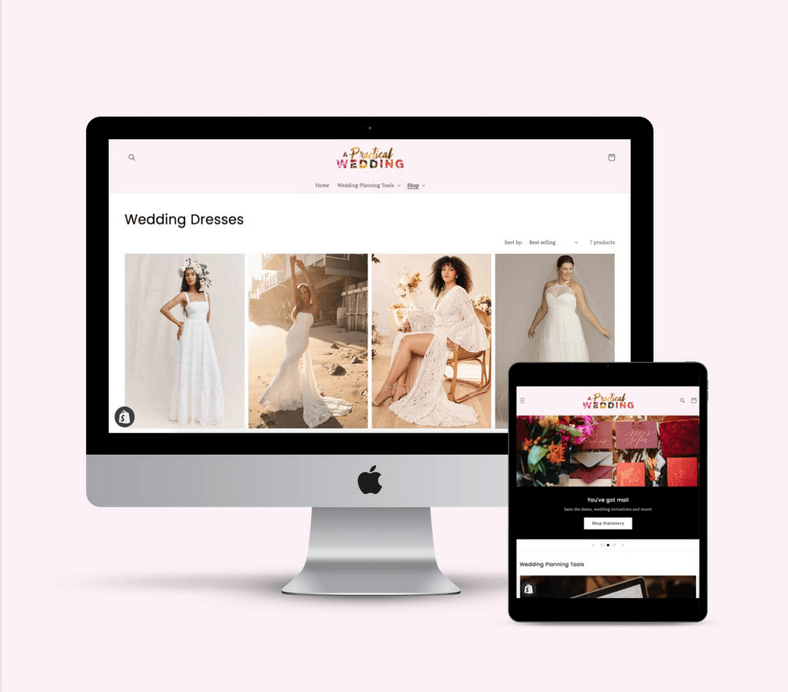

I have started a number of micro-to-medium-sized businesses over the years, and I have made the same mistake almost every time.
That mistake? Spending money before making money, which—surprise!—isn’t the best business strategy. Because if you’ve got the cash, it’s much, much easier (and more fun!) to buy logos and business cards and supplies and seminars and memberships to various online services (“Ooh, I’m gonna need Photoshop!”) than it is to actually go out, sell something, and actually bring home some money. Mmm, business!
All of this is basically business porn that people use for bizturbation.
Of course, you do need a domain name, and then a website, and presumably a logo. And at some point you want to create legal documents and get insurance and figure out if you want to be an LLC or a corporation. None of these things are stupid. But they’re side notes. You can do all of these things and still not have a business. So today, in partnership with APW and Squarespace, I’m sharing what I’ve learned you actually need to start a business.
the essential truth of starting a business is…
Let’s pare it down: The only thing that is actually literally essential to having a business is that someone pays you money for something. If you’re feeling a little intimidated by the process of starting a business, it’s nice to just focus on one thing. Figure out something that people want to pay for, right now, without you having to pull metaphorical teeth. Then do or make the thing and get the money. Use the money for the other stuff, as needed.
The MVP—or minimum viable product—methodology has been around for years, popularized by Eric Ries in The Lean Startup. According to Ries, “the minimum viable product is that version of a new product which allows a team to collect the maximum amount of validated learning about customers with the least effort.” That is, before spending all your time and money building something you’re not sure anybody wants, create the minimum possible version that you can sell, and launch it in order to collect feedback and information. Then revise based on that feedback.
For software companies, an MVP is often actually a service—as in, before we go and build an expensive app, how about we just solve your problem personally, one-on-one, and see how that works for you. Are people willing to pay? Is their problem not quite as expected?
I’m so big on spreading this idea because I talk to a lot of women who want to start businesses that are not software companies. And when you google “MVP” (and really, a lot of other useful ideas), you get shit that is entirely about software. And not every business is like software. If you’re making strollers or replacement heart valves, you can’t release a shitty beta version and then wait for feedback before you fix all the bugs. You have to see through all the Silicon Valley jargon (and sometimes macho bullshit), and peel away all the software-specific adages—and then you get a really fucking good idea about how to start a business.
In fact, this March, I spoke to a group of Girl Scouts about entrepreneurship “from big to small.” The Scouts had already been through an entrepreneurship exercise in which they formed a mock startup, developed a business plan, and pitched to venture capitalists—which is one totally valid way to be an entrepreneur, but certainly not the only way. A lot of people would just be delighted to make a hundred grand a year without having to answer to a boss, and while having the ability to do a lunchtime yoga class whenever they feel like it. The MVP methodology is a hundred percent relevant here! (And even if you do want to go the venture capital route, it’s pretty rare for VCs to invest in new entrepreneurs based on a business plan alone—you’ll want to show that you have customers and revenue, so you’re going to need to bootstrap anyway.)
So I talked with these Girl Scouts about what everybody was interested in, how you could help someone in that area of interest with a problem they have, and how to get your first customer with zero to $100. One high school student developed a totally viable plan to breed rare fish in her bedroom and sell them directly to rare fish aficionados (afishionados?) over message boards. She has direct access to the exact people who are willing to buy, and she can survey them and possibly take pre-orders before investing her time and money. Another had an idea to train “older people” who run businesses to be better at Instagram, and I was like: Wait, I am your target market, and I want that, except that I want you to just do it for me, you cool teenager, you! Feedback!
This brings to mind a fantastic interview on Autostraddle with Nathalie Huerta, owner of the only queer gym in the US. Huerta advises not to “get caught up in the sexiness of owning a business” and instead admonishes, “Never lose focus on sales. You don’t sell, you don’t eat.” Huerta notes that she bootstrapped her gym until (in the third year) a member who believed in her invested, and now she has more funding opportunities popping up, all from relationships she’s formed. Her happy customers are helping her expand.
non-tech MVP in a nutshell
- Find a group of potential customers that you actually have access to. (If you can’t get access, that’s a problem better discovered sooner than later!)
- Survey them and find out their pain points. This might seem tedious, but not more tedious than sitting on your ass once you’ve spent your savings making something no one wants.
- Develop the minimum possible solution to that problem, which might just be coming over to the person’s house and solving their problem in person.
- Work out an offer—an actual product or service in exchange for an actual amount of money. Don’t ask people if they would pay you money, ask them to pay you money. Lots of people say they would buy something, but when asked to actually buy, they have a million reasons why not, or why not right now. Those objections are the #1 thing you need to know! For example, you could simply individually email the people you’ve surveyed and ask them if they want to buy your MVP. Provide a PayPal link. Actually ask the person to be your customer. Make it personal so it would be awkward for them to just ignore your email. If they don’t buy, thank them for helping you develop your business, and ask why the offer isn’t right for them. Get all the feedback. If a lot of the feedback says the same thing, do that other thing instead.
If your customers want something different from what you expected, they might not be the perfect customers for you, but they’re not wrong. Find out exactly what this other thing is that they’re itching to pay money for! Do you really want to do your exact original idea more than you want a viable business? Say you want to offer postpartum personal training to new moms, so you ask some new moms to book sessions with you. Maybe they said they wanted a boot camp, but when you ask them to buy right now, they’re too tired to think about it (understandable), or maybe they do book but then don’t show up because, you know… childcare. Maybe some of your clients don’t really want to work out after all—they want to feel like they’re doing something healthy for themselves, to get a break from the baby, and to get some sympathy from others about what they’re going through. Maybe they actually want a fitness discussion group, with green smoothies. It’s a lot easier to sell things to people when you give them the thing they secretly want but no one ever really asked them about.
Once you have some customers, make them really happy and keep them in the loop about the changes you’re making as you upgrade from the MVP version to the bigger-and-better version! Ask for referrals; keep getting feedback. Use your actual revenue to brand the shit out of this thing you’ve built. You might even survey your customers about your new company name, logo, color scheme, and so on. Use your branding, website launch, etc. as opportunities to contact and thank your customers, and ask them, your ground-level members, to spread the word!
As you build that bigger-and-better version, that’s when you build a business you can scale (if that’s your goal). How can you remove yourself from having to intervene in every transaction, and have those functions completed by employees, contractors, or software? Outsource some functions as needed. Create systems and procedures so routine tasks can be streamlined, and you can focus on the broader vision for the company.
Sure, shit gets complicated around that point, but it’s a lot more motivating to figure it all out when you’ve got happy people giving you money, and wanting you to succeed.

This post was sponsored by Squarespace. When it comes time to turn your MVP into a website, Squarespace is there to provide the creative tools to build it beautiful and build it easily, even if you’ve never made a website before and have no idea where to start. And with sites starting at just $12 a month, you can also build your website affordably. They even have an easy logo maker to get you started (no Photoshop needed!). In conjunction with our career series this year, Squarespace is offering APWers a 10% discount on yearly subscriptions when you use the code APW16 at checkout. Click here to get your website started today with a free 14-day trial from Squarespace.
![]()
 Meet APW BusinessWoman Brooke Reninger!
Meet APW BusinessWoman Brooke Reninger!
My name is Brooke Reninger and I am a professional doula. I provide expecting mothers and their families with supportive services in an unbiased, nonjudgmental way throughout their pregnancy, birth, and postpartum. Squarespace makes it extremely easy for my business to have a professional-looking website. These days, and in my career, a website is vital. Most of my clientele comes to me online in some way. Squarespace also makes it easy for me to run a pregnancy, birth, and women’s blog right on my website. These two things are absolutely essential to making my business easy to find online.






